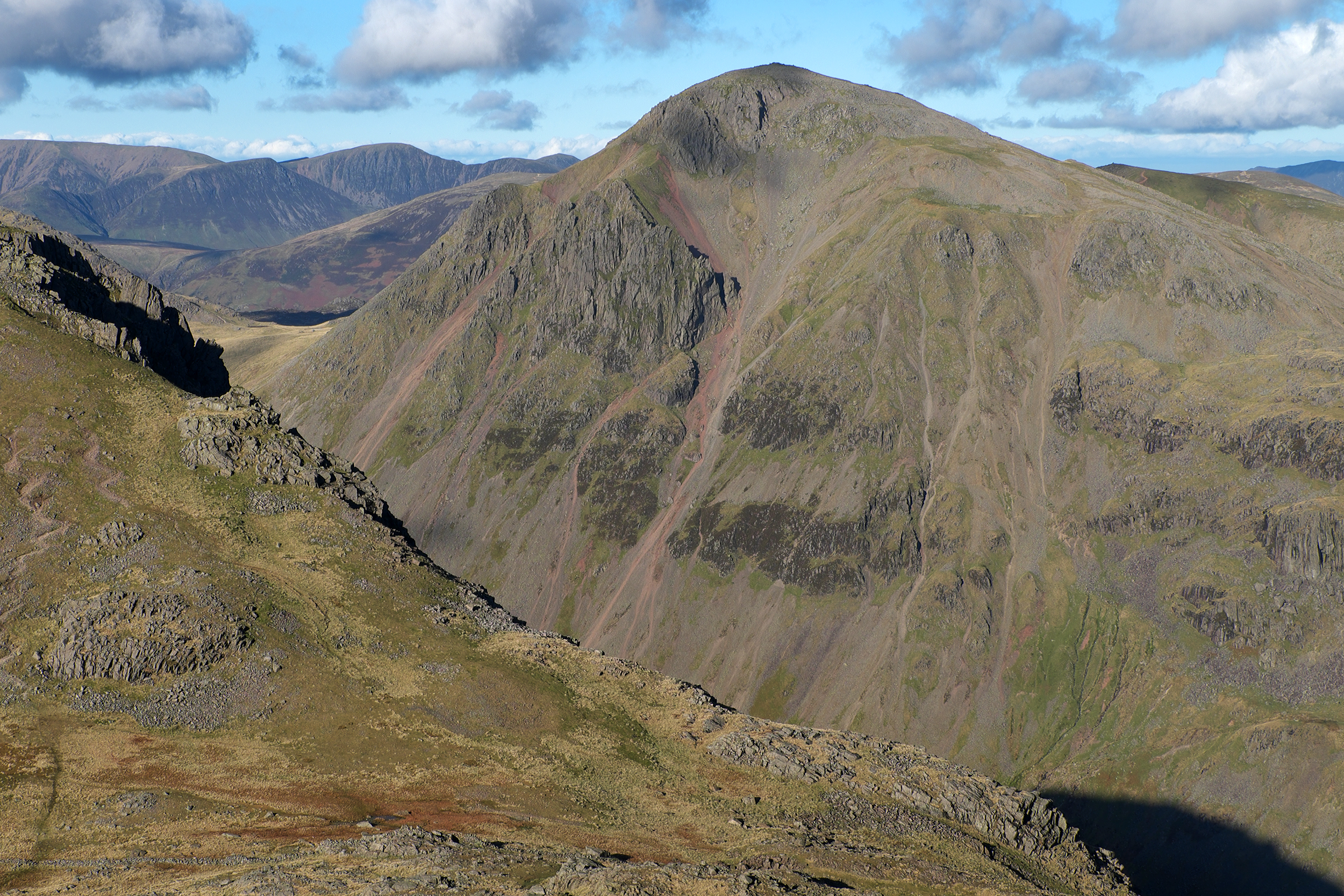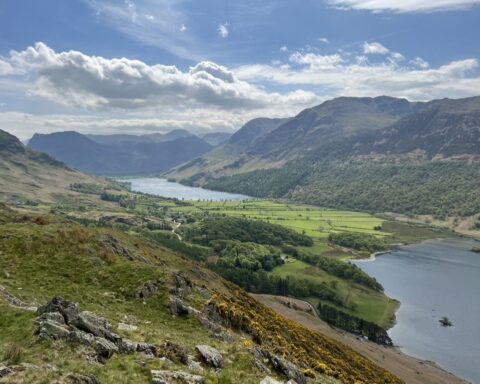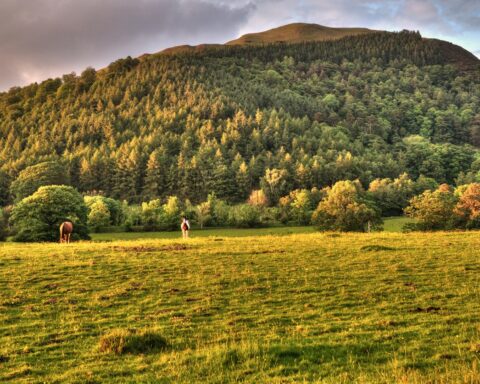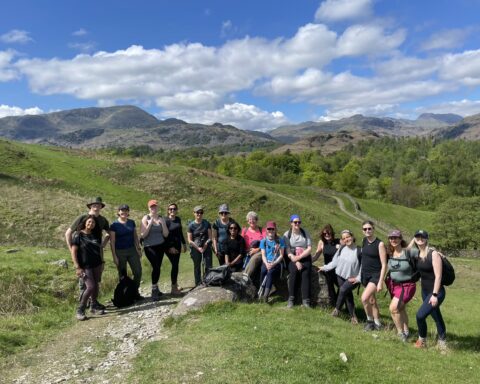Great Gable, usually referred to simply as ‘Gable’, is one of the most distinctive fells in the Lake District, clearly visible and easily identified from all over the National Park. This massive dome of rock and scree stands alone, separated from the illustrious Scafell group by the deep valley of Lingmell Beck, and from its nearest neighbours, Green Gable and Kirk Fell, by steep slopes littered with boulders. At 2949ft (899m), it occupies a commanding position at the head of Wasdale – its moss-draped Westmorland Cairn providing an excellent bird’s-eye view of Wastwater.
Gable is a playground for walkers, scramblers and climbers alike. It can be approached from Wasdale, via Gavel Neese, although the walk in from Honister Pass involves less ascent. The fell can also be reached from Borrowdale, via either Styhead Gill or the hanging valley of Gillercombe. Whichever route you take though, the climb on to the fell itself inevitably involves steep, loose ground – it’s unavoidable.
The Gable Girdle provides a challenging alternative to the walk to the summit, completing a circuit of the fell’s precipitous slopes using trails that used to be the domain solely of hardened climbers. It traverses scarily steep ground, requiring hikers to cross unstable scree chutes, negotiate boulder fields and clamber across slabs of bare rock. You’ll need a head for heights and surefootedness to complete the whole traverse, although there are escape points where the more ‘pedestrian’ routes on to the fell are encountered.
The southern part of the Gable Girdle passes beneath the Great Napes, a tremendous conglomeration of rocky ridges, gullies and pinnacles that seems almost to hang off the flanks of the mountain. This rock-bound world is home to colourfully named features such as Sphinx Rock, Eagle’s Nest Ridge and Napes Needle. The latter is a sheer-sided, slender column of smooth rock standing proud of its neighbours. The first recorded ascent of Napes Needle was by Walter Parry Haskett Smith, the so-called ‘father of British rock-climbing’, and is regarded as the moment when, in 1886, climbing became a sport.
On Remembrance Sunday each year – whatever weather the Lakeland autumn is throwing at them – hundreds of walkers and climbers gather on Gable’s summit to remember the dead of the First World War. In the 1920s, this fell, along with 11 other nearby summits, was bought for the nation by members of the Fell and Rock Climbing Club as a memorial to those who had been killed in the bitter 1914-1918 conflict. The names of the 20 club members lost, among them several leading climbers of their generation, are inscribed on a plaque on the summit rocks.
The northern and western flanks of the fell are crossed by an old packhorse route, known as Moses’ Trod, once used to move slate quarried from Honister to Wasdale for transportation on to the port of Ravenglass. It was named after Moses Rigg, a quarryman who, legend has it, illegally made whisky from bog water and then smuggled it across the fells with his pony-loads of slate.





